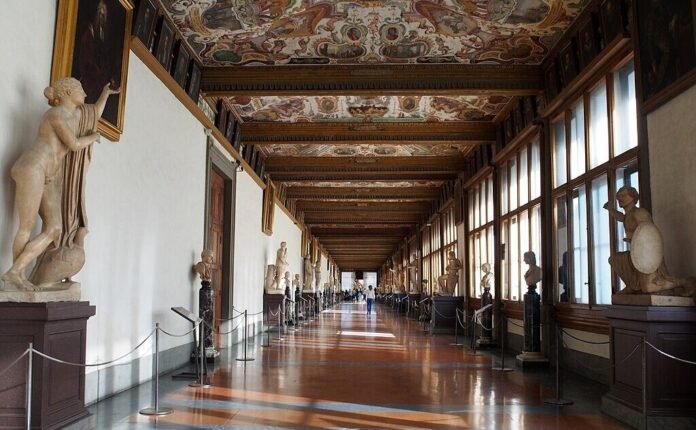Uffizi Gallery warns of selfie culture after tourist damages 18th-century Medici painting
An 18th-century portrait of Ferdinando de’ Medici has been damaged after a tourist reportedly fell while attempting to take a selfie at the Uffizi Gallery in Florence, sparking renewed concern over visitor behaviour in cultural institutions.
The painting, by Anton Domenico Gabbiani, was part of the Florence and Europe: Arts of the Eighteenth Century exhibition when the incident occurred. According to museum officials, the unnamed tourist lost their balance while trying to “make a meme in front” of the artwork, falling backwards and damaging the canvas.
The Uffizi Gallery confirmed that the damage is reparable and the portrait will return to public display after restoration. However, gallery director Simone Verde issued a stern warning about the increasingly disruptive influence of social media-driven tourism on heritage sites.
“The problem of visitors coming to museums to make memes or take selfies for social media is rampant,” Verde said in a statement. “We will set very precise limits, preventing behaviour that is not compatible with the sense of our institutions and respect for cultural heritage.”
The tourist responsible for the fall has been identified by police and formally reported to judicial authorities, the museum added.
The incident has forced the temporary closure of the entire exhibition, which featured around 150 works. It is expected to reopen on 2 July and will run until 28 November as originally scheduled. The damaged painting will be reinstalled once restoration is completed.
Embed from Getty ImagesPhotographs from inside the gallery showed the conspicuous absence of the Medici portrait between two large artworks on a deep purple wall—its absence a visible reminder of the consequences of careless conduct.
This is not the first time in recent months that Italian cultural institutions have faced damage due to reckless behaviour. Earlier this year, at Palazzo Maffei in Verona, a visitor fell onto a bejewelled art installation by Nicola Bolla while posing for a photo. He had been pretending to sit on the fragile chair alongside a woman.
Museum director Vanessa Carlon commented on the incident in Verona: “Sometimes we lose our brains to take a picture, and we don’t think about the consequences. Of course, it was an accident, but these two people left without speaking to us – that isn’t an accident.”
The growing prevalence of such accidents has reignited debates over how museums can balance public accessibility with the safeguarding of cultural treasures. With millions of tourists flooding iconic galleries each year, many venues face pressure to maintain engagement while deterring disrespectful or hazardous behaviour.
Verde’s announcement hints at a tougher stance moving forward. While he did not outline specific new policies, he suggested stricter behavioural guidelines and possibly designated zones for photography to preserve the integrity of exhibits.
The portrait of Ferdinando de’ Medici, painted by Gabbiani in the early 1700s, depicts the Grand Prince of Tuscany in courtly splendour and is considered an important work from the artist’s late Baroque period. The prince, once heir to the Grand Duchy of Tuscany, was a notable patron of the arts.
For now, the Uffizi’s message to visitors is clear: museums are spaces for reflection, not performance. And if safeguards are not respected, institutions may increasingly prioritise preservation over public access.
